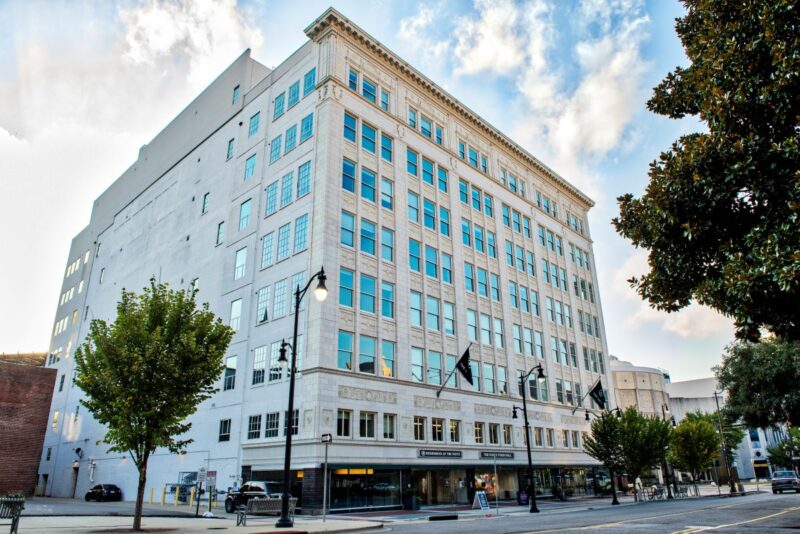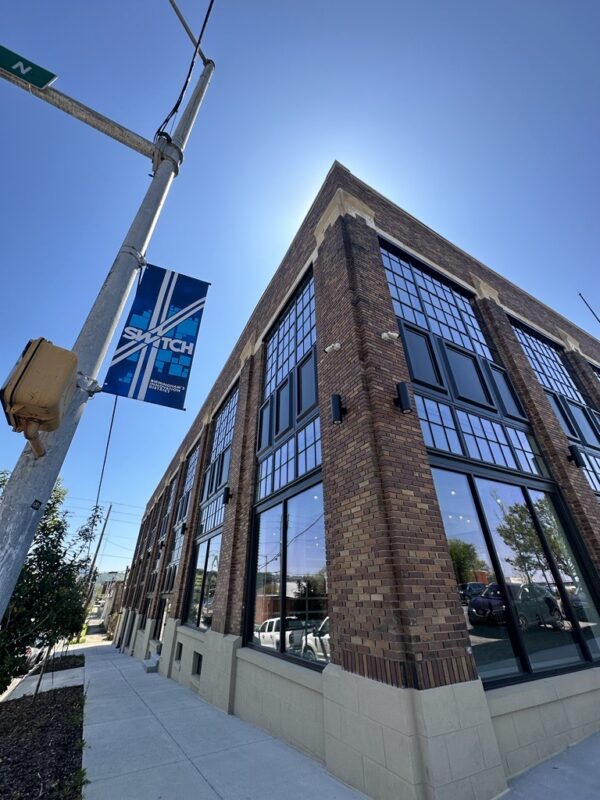
As we continue our 2025 National Historic Preservation Month series, we’re turning the spotlight on one of the most effective tools in preservation and revitalization — not just nationally, but right here in Birmingham: historic tax credits.
For preservation advocates (or “building huggers,” as we like to call ourselves), historic tax credits are essential. They don’t just help save historic buildings — they support local economies, encourage private investment and breathe new life into spaces that shape the identity of our communities.
What are historic tax credits?
Historic tax credits come in two powerful forms: The Federal Historic Tax Credit (HTC) and state historic tax credits — in our case, the Alabama Historic Rehabilitation Tax Credit (AHRTC). Used together, they can dramatically reduce the cost of redeveloping a historic property, making preservation viable for a wide range of projects. Let’s break them down:
The Federal Historic Tax Credit
The federal credit, permanently established in 1981 as part of a Reagan-era economic stimulus package, provides a 20% federal income tax credit for the certified rehabilitation of income-producing historic buildings — like apartments, offices, retail spaces and restaurants.
To qualify, a building must be a certified historic structure — either listed individually on the National Register of Historic Places, or contributing to a registered historic district. Fortunately, Birmingham’s downtown is rich with qualifying buildings — from early skyscrapers to 20th-century commercial storefronts.
The credit is claimed over five years, and applies only to substantial rehabilitations, meaning your Qualified Rehabilitation Expenditures (QREs) during a 24-month (or 60-month, for phased projects) window must exceed either $5,000 or the building’s adjusted basis — whichever is greater. The adjusted basis is generally the purchase price of the building, minus land value, plus improvements, minus any depreciation.
The work must also follow the Secretary of the Interior’s Standards for Rehabilitation, ensuring the building’s historic character is maintained.
The application process involves three parts:
- Part 1 confirms the building’s historic significance.
- Part 2 details the rehabilitation plans and how they meet preservation standards.
- Part 3 certifies that the completed work matches the approved plan.
Applications are reviewed by the Alabama Historical Commission (our State Historic Preservation Office), then forwarded to the National Park Service. There’s a five-year compliance period, during which the credit can be partially recaptured if the property is sold or altered inappropriately — though the risk decreases by 20% each year.
The Alabama Historic Rehabilitation Tax Credit
To make preservation even more accessible, Alabama established its own companion program in 2013. The AHRTC offers a 25% refundable state income tax credit for the rehabilitation of historic, income-producing properties. Unlike the federal credit, this one is refundable, meaning it can provide a cash benefit even if your tax liability is low — a game-changer for nonprofits and smaller developers.
The state program has caps ($5 million per project, $30 million annually across the state), but when paired with the federal credit, projects can potentially receive up to 45% of rehab costs back through tax incentives.
Numbers tell the story
The economic case for these programs is compelling. According to the National Trust for Historic Preservation, the Federal HTC alone has:
- Rehabilitated more than 49,000 historic buildings
- Created more than 3.2 million direct/indirect jobs
- Generated $235 billion in private investment
And here’s something often overlooked: federal revenue generated by these projects exceeds the cost of the tax credit itself. The HTC doesn’t just preserve historic places — it drives growth, revitalization and long-term economic value.
In downtown Birmingham, projects like The Pizitz, The Florentine and NEXTEC show how federal and state credits work in tandem to bring vacant or underused buildings back to life — creating apartments, restaurants, event venues and offices that serve today’s community while honoring the city’s past.
These kinds of projects make preservation feel tangible. They help people experience the value of historic buildings not just as artifacts, but as active, working parts of the city’s future.



Strengthening the Federal HTC with HTC-GO
While the federal HTC is effective, there’s room for improvement. That’s why preservation advocates across the country are rallying behind the newly reintroduced Historic Tax Credit Growth and Opportunity (HTC-GO) Act in the U.S. House and Senate.
This legislation proposes several important updates:
- Increasing the credit to 30% for smaller rehabilitation projects (under $2.5 million in costs)
- Eliminating the basis adjustment, making the credit easier to combine with other incentives like the Low-Income Housing Tax Credit
- Lowering the rehabilitation threshold from 100% to 50% of the adjusted basis
- Simplifying the program, especially for nonprofit developers
HTC-GO would make the credit more flexible and accessible — particularly important in cities like Birmingham, where small to mid-sized projects make a big difference in preserving neighborhood character and activating underused buildings.
Looking ahead
Historic tax credits — federal and state — prove that smart policy can drive meaningful change. They reward stewardship, inspire reinvestment and preserve the places that connect us to our shared story.
As Birmingham continues to grow, let’s keep using the tools that make our revitalization not only possible, but inclusive, resilient and rooted in our unique history.
This blog is part two of our 2025 Historic Preservation Month series. Check back soon for part three!
Related News
-
Safeguarding history, one preservation easement at a time
Filed Under: Developer, Front Page, Historic Preservation, Yaysayers
As longtime preservation advocates, we’re also proud to introduce REV’s own Historic Preservation Easement Program, created to help safeguard Birmingham’s irreplaceable architecture while adding long-term value to development projects involving historic properties.
-
Listing history, building legacy: The National Register’s role in downtown’s historic districts
Filed Under: Historic Preservation
We’ve explored downtown Birmingham’s preservation wins and mourned its losses; this time, we’re turning our attention to the tools that help make preservation possible. In this piece, we’ll be diving into what is arguably the most foundational tool — and often the first step — in any preservation project: getting a building or district listed on the National Register of Historic Places.
-
Date night done right: Romantic outings you’ll fall for in Birmingham
Filed Under: Birmingham Food & Drink, Downtown Birmingham, Family Friendly, Front Page, Residential, Yaysayers
Looking for the perfect way to spend quality time with your special someone? In this guide, we’ve rounded up a variety of Magic City date ideas tailored to different tastes, personalities and interests. So, grab your partner, or even a few friends, and explore some of Birmingham’s best spots for a truly memorable time.